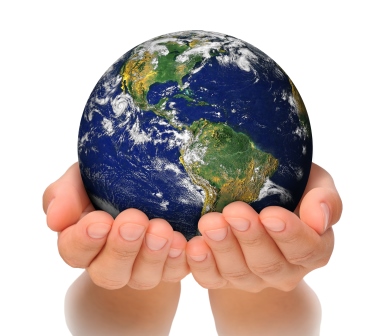There are many ways to donate and make a difference; that’s true no matter where you go around the world. What remains the same, according to the BNP Paribas Individual Philanthropy Index, is our overriding desire to leverage charitable giving to make lasting change.
Interestingly, the ways that people in different regions of the world choose to actually do that varies substantially, as do the causes each region prefers to support.
Latin America
Donating to religious organizations is one effective way to help others, and it’s an avenue of philanthropy inherent to the Latin American model of giving. One notable benefit to supporting religious organizations is the inherent ability to simultaneously support programs that assist with education and human services. For instance, Caritas, which is the umbrella organization for Catholic Aid agencies, is considered to be one of the largest aid agencies in the world. The church runs thousands of schools, hospitals and health clinics.
Europe
Surprisingly, the Netherlands, which traditionally has aligned with the Scandinavian philanthropic model of a strong welfare state with a tradition of active volunteerism, also saw an uptick in religious giving in 2015.
In general, though, concerned and generous donors in Europe wanted to help by supporting organizations that focused on health.
The method of donating in Europe isn’t, generally, church based. Instead there is both the Anglo-Saxon and Rhine models of charitable work, which rely heavily on Civil Society Organizations (CSOs). Organized “civil society” comes in many forms, including non-governmental organizations (NGOs), community-based organizations (CBOs), and, again, faith-based organizations (FBOs). The commonality is that a group of individuals has come together for a common purpose, exists to fulfill a need or mandate, and has clients or beneficiaries whom they serve.
This people-focused purpose of CBOs is mirrored by the donation patterns in several European countries where international and humanitarian aid was a priority. In 2016, Germany gave 74 percent of its donations to these causes, while Belgium and Switzerland gave 61 and 43 percent, respectively.
The United States
In the United States, according to Giving USA 2017, the organizations that received the most support were religious, educational and human services in nature.
This is different from both the Anglo-Saxon and Rhine models of charitable work, which rely heavily on Civil Society Organizations (CSOs). Organized “civil society” comes in many forms, including non-governmental organizations (NGOs), community-based organizations (CBOs), and, again, faith-based organizations (FBOs). The commonality is that a group of individuals has come together for a common purpose, exists to fulfill a need or mandate, and has clients or beneficiaries whom they serve.
This people-focused purpose of CBOs is mirrored by the donation patterns in several European countries where international and humanitarian aid is a priority. In 2016, Germany gave 74 percent of its donations to these causes, while Belgium and Switzerland gave 61 and 43 percent, respectively.
The Importance of Foundations, Globally
In order to truly create lasting change, donors have become more savvy about looking for groups that have partnerships and affiliations that will enhance the stated mission of the charity implementing the programs. For this reason, perhaps, it’s foundations that have seen the significant growth, particularly in Europe, over the past few years.
In the United States, where there are tax benefits to forming a foundation, foundations are uniquely qualified to bring about lasting change because they can vet the charities that ask for grants and fund those that are effective. Foundations will also often focus on a large problem and give financial support to multiple charities working (sometimes in partnership) to solve that problem. For instance, the Bill and Melinda Gates Foundation has set a goal of eradicating polio, and because of the size of the foundation and the accompanying reach, the organization may succeed soon.
The idea that a foundation will address a big picture issue is not unique to the U.S. The Wellcome Trust, based out of London, also focuses on global health initiatives.
Another European model, including the foundations launched fairly recently in Italy, will often create programs and do the actual work, as well as educate and advise. Focusing on foundations is popular, globally, because they are effective at addressing problems from a variety of angles.
Generosity Seen Another Way
There is one other way to look at the ways in which people are philanthropic: actual actions rather than direct financial donations. The World Giving Index, created annually by the Charities Aid Foundation, does exactly that. Each year they look at the ways individuals in multiple countries help each other by donating money, but also by volunteering and helping a stranger.
According to the 2016 report, there were multiple acts of kindness and generosity around the world. Those acts, the simple act of helping a stranger, may make a difference as much as the financial donations.
While there may be many different avenues for philanthropic support, one thing remains true of charitable giving no matter where you go: our desire to create lasting change and make a positive impact.


No responses yet